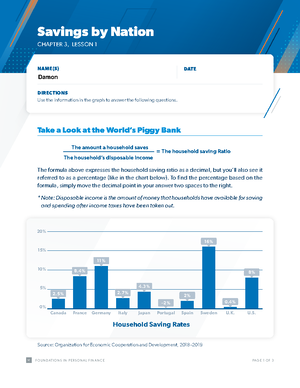Understanding the Cost of Private Family Health Insurance Plans in 2018: What Families Paid and How to Access Coverage

Introduction: The Landscape of Family Health Insurance Costs in 2018
In 2018, families across the United States faced significant financial decisions when selecting private health insurance plans. Understanding the typical costs, the factors driving these expenses, and the steps to access coverage is crucial for making informed choices. This article explores the average premiums for family health insurance plans in 2018, provides context for these figures, and offers actionable guidance for families seeking coverage.
The Average Cost of Family Health Insurance in 2018
According to the Kaiser Family Foundation’s comprehensive
2018 Employer Health Benefits Survey
, the
average annual premium for employer-sponsored family health insurance plans in 2018 was $19,616
[1]
. This figure represented the combined contributions of both employers and employees. The cost for single coverage in the same year averaged $6,896 per year. The increase in family coverage premiums-up 5% from the previous year-reflected a broader trend of rising healthcare costs over the past decade.
The Medical Expenditure Panel Survey (MEPS) corroborates these findings, reporting an average total family premium of $19,616 for private-sector employees in 2018. For comparison, the average premium for employee-plus-one coverage (often used by couples or a parent and child) was $13,425, while single coverage averaged $6,715 [2] .
Variation by Employer Size and Region
Premiums varied based on the size of the employer. In small firms (3-199 workers), the average family premium was $18,739, while in large firms (200 or more workers), it was $19,972 [1] . Geographic variation was also significant: according to the Commonwealth Fund, the lowest average family premium was $17,337 in North Dakota, while the highest reached $22,294 in New Jersey [4] . These differences were influenced by regional healthcare markets, local regulations, and cost of living.

Source: studocu.com
Deductibles and Out-of-Pocket Costs
Premiums are only part of the total cost of health insurance. Most plans also require enrollees to pay deductibles and other out-of-pocket expenses. In 2018, the average deductible for single-coverage enrollees was $1,573, but it could be significantly higher in small firms and in certain states [2] . For family plans, the deductible could be much larger, and families needed to budget for copayments and coinsurance as well. According to the Commonwealth Fund, the combined cost of premiums and potential deductible spending for a family could exceed 11% of median income in some states [4] .
Trends and Factors Influencing Costs
The cost of family health insurance has been rising steadily. From 2008 to 2018, the average family premium increased by 55%, and from 2013 to 2018, it rose by 20% [1] . Reasons for these increases include higher medical care costs, advances in treatment, and changes in insurance market regulations. Employers often share the burden of these costs with employees, but the employee share of premiums and deductibles has also grown over time.
Accessing Private Family Health Insurance: Step-by-Step Guidance
Families seeking private health insurance in 2018 typically had two main pathways: employer-sponsored plans and direct purchase through the individual market (including HealthCare.gov and state-based exchanges). Here’s how to approach each option:
1. Employer-Sponsored Coverage
Most Americans receive health insurance through their employer. If you or your spouse worked for a company offering health benefits, you could enroll during the annual open enrollment period or after a qualifying life event (such as marriage or the birth of a child). To access employer-sponsored coverage:
- Contact your HR or benefits department for plan options and enrollment instructions.
- Review plan summaries, paying special attention to premiums, deductibles, and covered benefits.
- Consider the total cost, including both your premium contributions and expected out-of-pocket expenses.
- Ask about employer contributions, wellness incentives, and health savings account options.
If you have questions about your rights or need help comparing options, you may contact your state’s Department of Insurance for assistance. You can find your state regulator by searching “[Your State] Department of Insurance” online.
2. Individual and Family Plans (Direct Purchase)
For families not eligible for employer-sponsored coverage, the individual market provides alternatives. You can shop for and purchase health insurance through the federal Health Insurance Marketplace (HealthCare.gov) or your state’s exchange, if available. Here’s how to proceed:
- Visit HealthCare.gov to explore available plans, check eligibility for subsidies (premium tax credits and cost-sharing reductions), and enroll. HealthCare.gov is the official federal portal and is accessible nationwide.
- Some states operate their own exchanges. To find your state’s marketplace, search for “[Your State] Health Insurance Marketplace” or visit HealthCare.gov and select your state to be redirected.
- Compare plans by reviewing premiums, deductibles, provider networks, and covered services.
- Use the marketplace tool to estimate your total costs, including monthly premiums and out-of-pocket expenses based on your family’s expected healthcare needs.
- If you need assistance, certified navigators and brokers are available to provide free, unbiased help. You can find local help through HealthCare.gov’s “Find Local Help” feature.
For those buying directly from insurers (outside the marketplace), contact the insurance company’s official website or call their customer service for plan details and enrollment instructions. Always ensure the insurer is licensed in your state by checking with your state Department of Insurance.
Strategies to Manage and Reduce Health Insurance Costs
Families concerned about affordability can take several steps to manage costs:
- Shop around each year to compare plan options, as premiums and networks can change annually.
- Check if you qualify for subsidies on the Health Insurance Marketplace; many families receive financial assistance based on income and family size.
- Consider high-deductible health plans (HDHPs) paired with Health Savings Accounts (HSAs) for lower premiums, but be aware of higher out-of-pocket costs.
- Look for employer wellness programs or incentives that can reduce your premium share or provide other benefits.
- Review your healthcare usage and select plans that match your family’s needs-sometimes higher premiums can mean lower overall costs if you anticipate significant medical expenses.
If you experience a qualifying life event (such as job loss, marriage, or birth of a child), you may be eligible for a special enrollment period. Visit HealthCare.gov or your state’s marketplace for details.
Challenges and Considerations
While employer-sponsored insurance remains the most common form of private coverage, not all families have access, and costs can still be burdensome. High premiums and deductibles may lead some families to delay or forgo needed care. It is essential to balance affordability with adequate coverage, considering both monthly premiums and potential out-of-pocket costs.
Coverage rates and plan availability also vary substantially by state. According to the U.S. Census Bureau, in 2018, private coverage rates ranged from about 54% to 80% across states [5] . This means that the process and options for securing coverage may differ depending on where you live.
Conclusion: Making Informed Choices for Your Family
In 2018, the typical cost for a private family health insurance plan was nearly $20,000 annually, but the amount you might have paid depended on your employer, state, and plan selection. To access coverage, families should carefully compare options, seek qualified assistance when needed, and regularly review their coverage to ensure it meets evolving needs. By understanding premiums, deductibles, and available resources, you can make more confident decisions about your family’s health insurance.

Source: healthplansinoregon.com
References
- Kaiser Family Foundation (2018). 2018 Employer Health Benefits Survey: Cost of Health Insurance.
- Agency for Healthcare Research and Quality (2019). Trends in Health Insurance at Private Employers, 2008-2018.
- The Commonwealth Fund (2019). Trends in Employer Health Care Coverage, 2008-2018.
- U.S. Census Bureau (2019). State-by-State Health Insurance Coverage in 2018.






